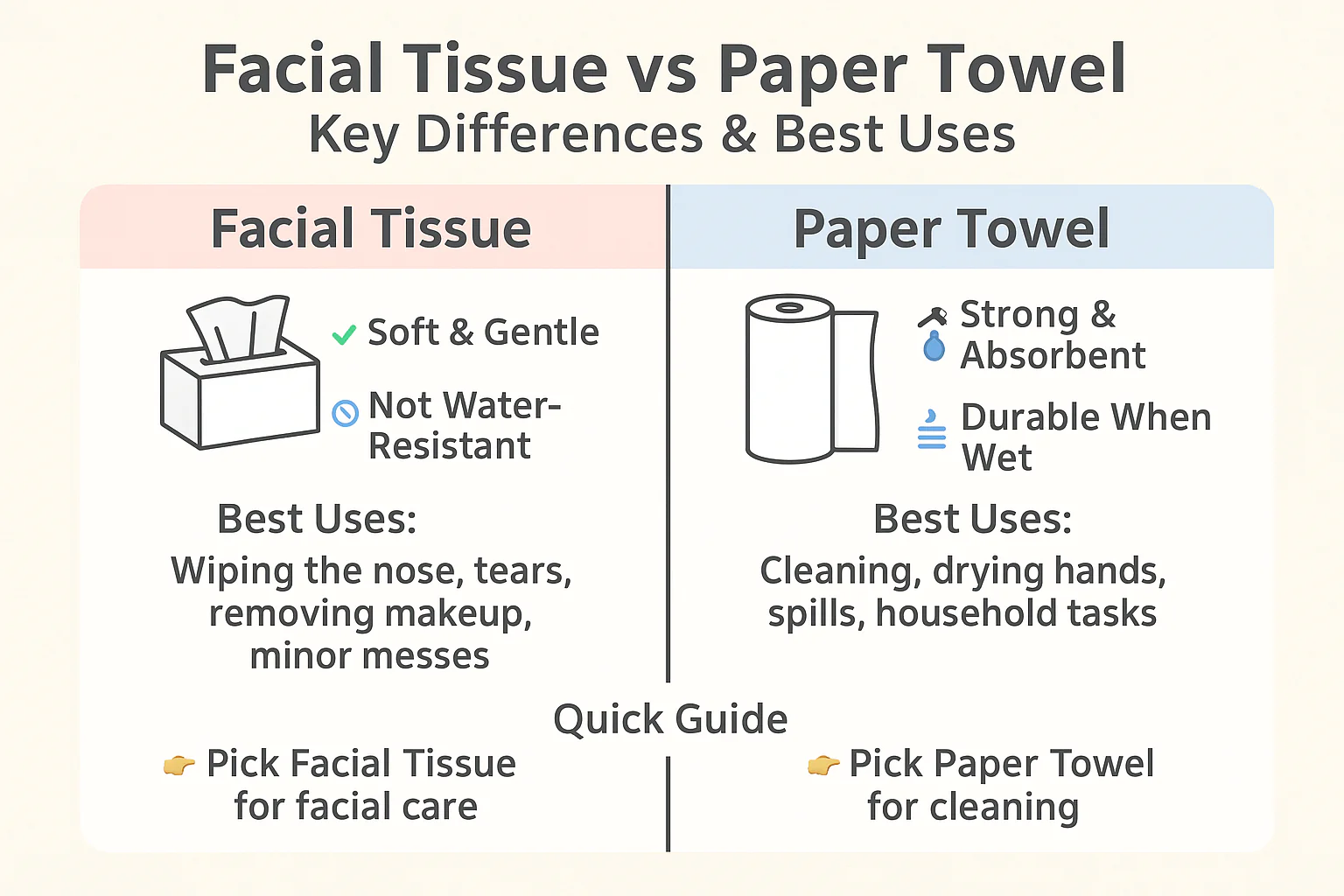Facial Tissue vs Paper Towel: Key Differences and Best Uses?
I used to think all paper products were the same — until I used a paper towel on my face. Big mistake. Here’s how facial tissue and paper towel really differ.
Facial tissues are soft and designed for skin contact, while paper towels are strong, absorbent, and made for surface cleaning. Each has its role — using them wrong can lead to waste or discomfort.
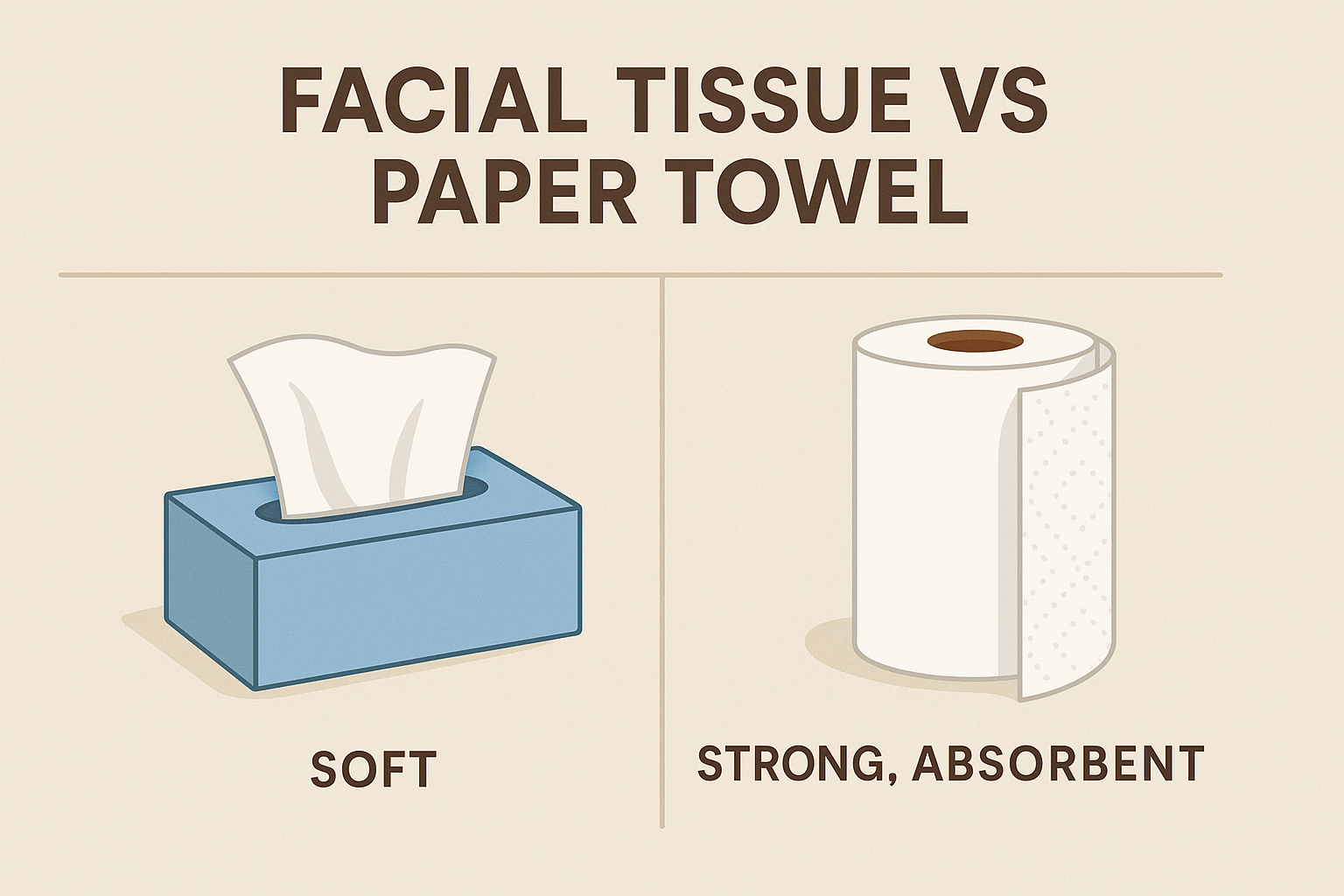
I’ve compared these side-by-side in my own home, and it’s clear: understanding their differences helps avoid skin irritation, wasted sheets, or scratched surfaces.
What is the difference between paper towels and face tissue?
At first glance, they’re both paper. But that’s where the similarity ends.
Paper towels are thick, absorbent, and built for wiping surfaces. Facial tissues are thin, smooth, and made for gentle skin contact.
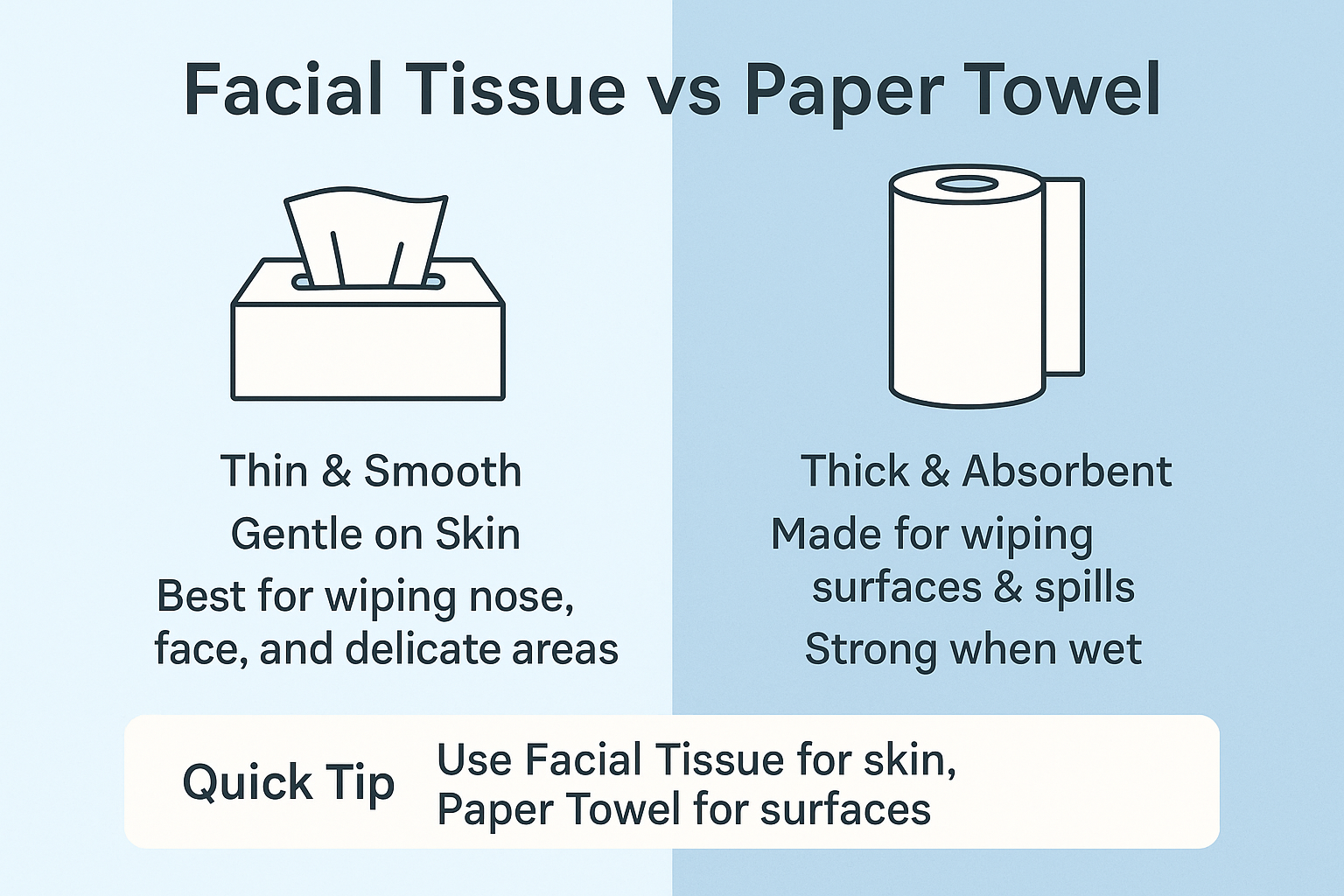
I once used a paper towel to dab sweat from my face. My skin stung for hours. That’s because paper towels are made with coarse fibers to scrub and absorb — not for comfort. They’re stronger, often embossed, and usually contain adhesive agents to hold up during scrubbing. This makes them perfect for kitchens, spills, and cleaning surfaces like desks or countertops.
Facial tissue, on the other hand, is made from finer pulp. It’s often treated to feel smooth, and in many cases, is infused with lotion or designed to be hypoallergenic. The ply count is lower, but softness is higher. I use it for wiping my nose, removing makeup, or gently blotting my skin. It's disposable, hygienic, and won’t irritate sensitive areas.
Here’s a quick comparison:
Paper Towel vs Facial Tissue: Use Case Comparison
| Feature | Paper Towel | Facial Tissue |
|---|---|---|
| Texture | Rough and thick | Soft and smooth |
| Absorbency | High – for spills and surfaces | Moderate – for moisture on skin |
| Skin Contact | Not recommended | Specifically designed for skin |
| Use Case | Cleaning, wiping, drying hands | Blowing nose, makeup, tears |
| Flushable? | ❌ Never | ❌ Not recommended |
| Compostable? | Depends on material | Some are (esp. bamboo-based) |
In short: don’t use paper towel on your face or facial tissue on your kitchen counter.
Is facial tissue the same as tissue paper?
This one confused me when I first read labels. Turns out, not all “tissue” is made for the same job.
Facial tissue is a specific type of tissue paper — it's softer, treated for skin use, and made in hygienic conditions.
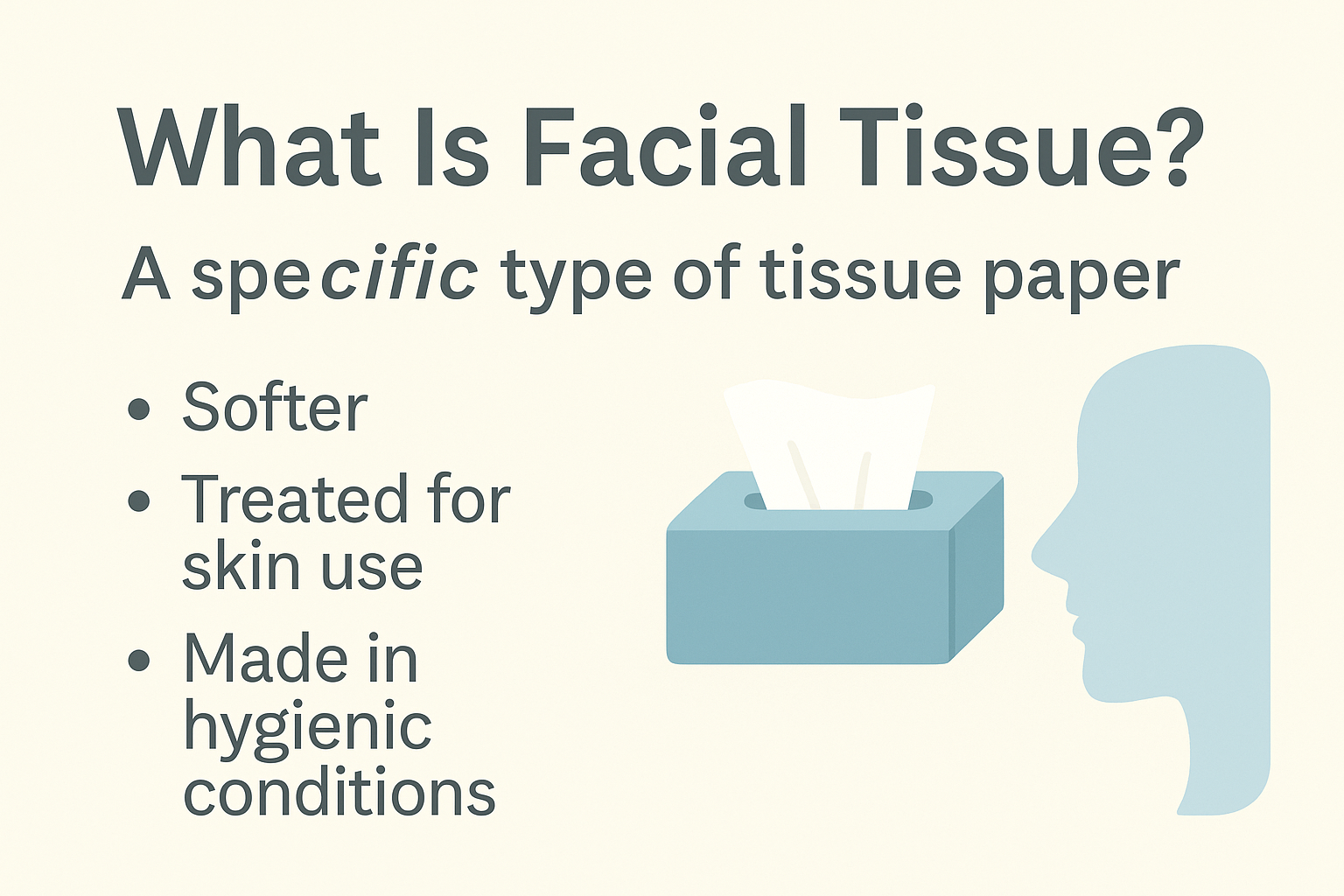
There are many kinds of tissue paper: wrapping tissue, craft tissue, packing tissue, even napkin-style products. Facial tissue is unique because it’s meant for face contact. It has a smoother finish, is usually multi-ply, and may include extra ingredients like aloe or vitamin E.
I learned the hard way by using a decorative tissue (from a gift bag) to wipe my face. It left fibers behind, and my skin felt itchy. That’s when I realized — "tissue" is not a one-size-fits-all term.
Real facial tissues are regulated differently, too. Brands like Kleenex or Scotties use FDA-compliant manufacturing for hygiene. Craft or wrapping tissue doesn’t go through that. So when shopping, always check the label — especially if you’re buying for kids or people with sensitive skin.
What is the difference between face tissue and normal tissue?
“Normal” tissue could mean a lot of things — napkins, toilet paper, or cheap multi-use sheets. But not all are safe for your face.
Facial tissue is built for the face — it’s softer, often hypoallergenic, and less likely to cause irritation than generic tissue products.
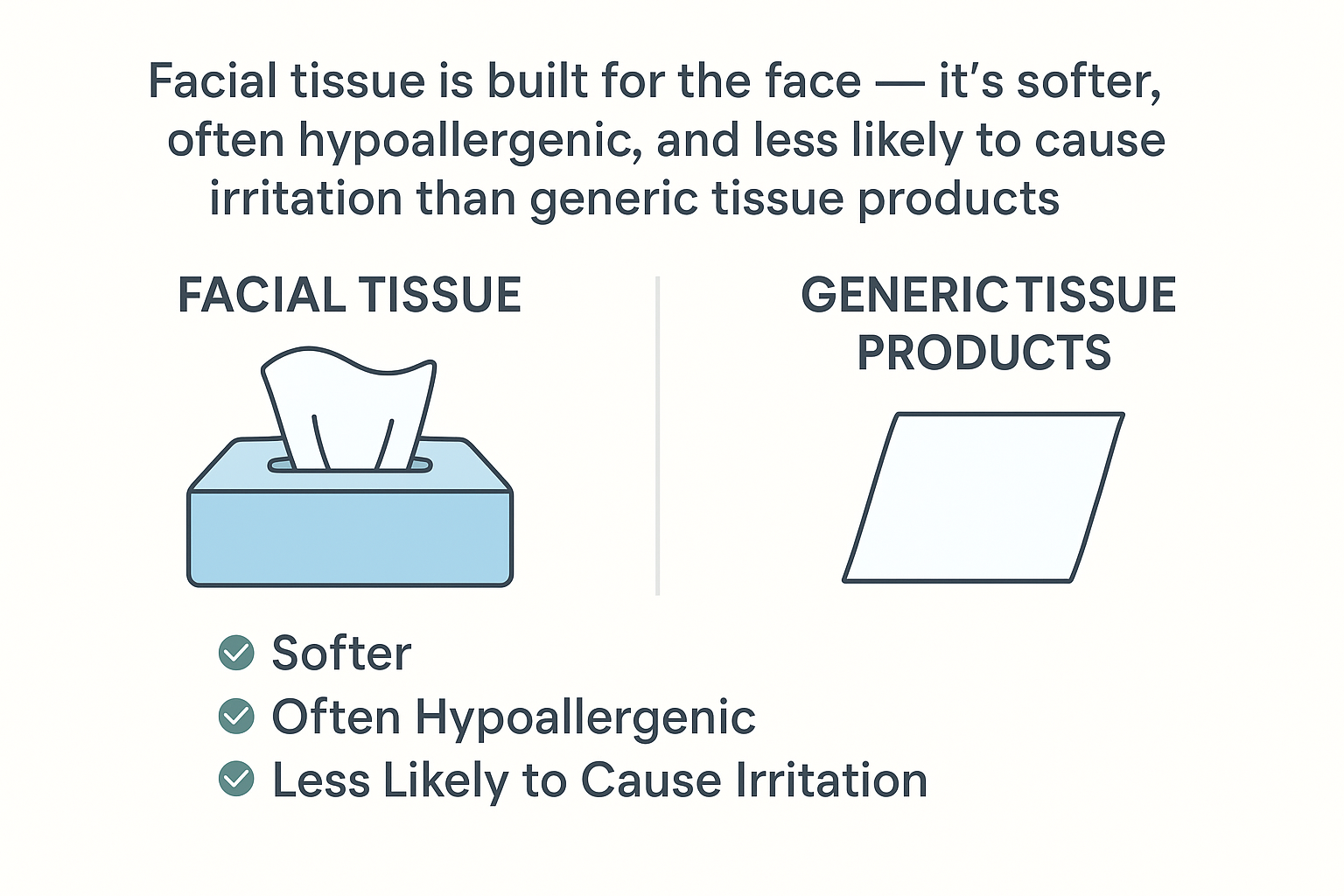
I once bought a bulk pack labeled “multi-use tissue” to save money. But when I used it on my face, it scratched. The paper wasn’t smooth, and it smelled strongly of bleach. That’s when I understood: not all tissue is made equal.
Face tissues use lower-weight pulp (around 14–18 g/m²), often calendered for smoothness. They’re designed to handle moisture without falling apart but not so stiff they scratch your skin. If you have sensitive skin, the difference is even more noticeable.
I’ve also noticed that good facial tissue doesn’t leave lint — something lower-grade options often do. That matters when wiping around your eyes, glasses, or devices.
If you're choosing between a facial tissue and a “regular” or bargain tissue, go with the one that lists skin-safe, fragrance-free, or dermatologist-tested on the box. It’s worth it.
Conclusion
Facial tissues and paper towels aren’t interchangeable. One’s made for skin, the other for surfaces. Choose the right one for the task — your face, and your cleaning routine, will thank you.
Share this article
About the Author

You might also like
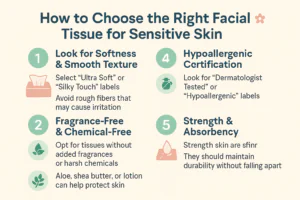
How to Choose the Right Facial Tissue for Sensitive Skin?
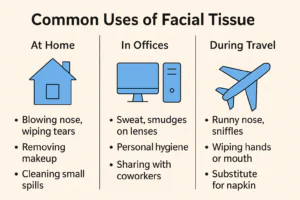
Common Uses of Facial Tissue in Homes, Offices, and Travel?
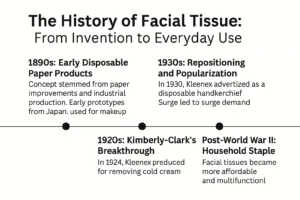
The History of Facial Tissue: From Invention to Everyday Use?
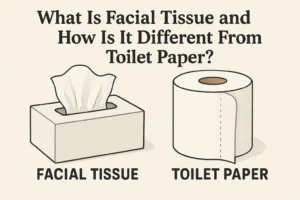
What Is Facial Tissue and How Is It Different From Toilet Paper?
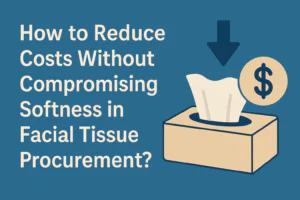
How to Reduce Costs Without Compromising Softness in Facial Tissue Procurement?

Is Bamboo Pulp a Better Option for Soft Facial Tissue Buyers?
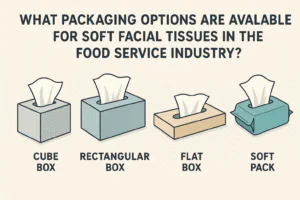
What Packaging Options Are Available for Soft Facial Tissues in the Food Service Industry?

Why Is Softness the Top Priority in Facial Tissue Selection?
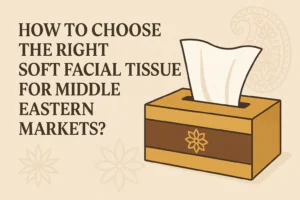
How to Choose the Right Soft Facial Tissue for Middle Eastern Markets?

